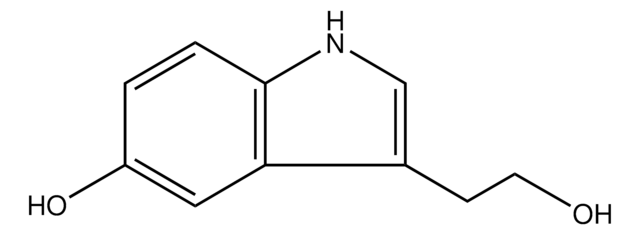推薦產品
生化/生理作用
AGX51 is an antagonist that blocks transcriptional regulators ID1-4 from binding basic helix-loop-helix (bHLH) transcription factor E47, causing ubiquitin-mediated degradation of IDs (10-40 μM for 2-48h; HCT116). AGX51 reduces cell viability, G0/G1 growth arrest, and a reduction in cyclin D1 levels in cultures (5-40 μM for 4-24h; HUVEC and HCT116) and suppresses ocular neovascularization in mouse models of age-related macular degeneration (AMD) and retinopathy of prematurity (ROP) in vivo (500 μg/mouse via twice daily i.p. or 1-30 μg/eye via intravitreal injection immediately and 7 days after rupture of Bruch’s membrane).
Antagonist that blocks transcriptional regulators ID1-4 from binding basic helix-loop-helix (bHLH) transcription factor E47, causing ubiquitin-mediated ID degradation.
儲存類別代碼
11 - Combustible Solids
水污染物質分類(WGK)
WGK 3
閃點(°F)
Not applicable
閃點(°C)
Not applicable
從最近期的版本中選擇一個:
NFkB-signaling promotes glial reactivity and suppresses Muller glia-mediated neuron regeneration in the mammalian retina
Glia, 70(7), 1380-1401 (2022)
Paulina M Wojnarowicz et al.
NPJ breast cancer, 7(1), 58-58 (2021-05-26)
ID proteins are helix-loop-helix (HLH) transcriptional regulators frequently overexpressed in cancer. ID proteins inhibit basic-HLH transcription factors often blocking differentiation and sustaining proliferation. A small-molecule, AGX51, targets ID proteins for degradation and impairs ocular neovascularization in mouse models. Here we
Paulina M Wojnarowicz et al.
Cell reports, 29(1), 62-75 (2019-10-03)
Id helix-loop-helix (HLH) proteins (Id1-4) bind E protein bHLH transcription factors, preventing them from forming active transcription complexes that drive changes in cell states. Id proteins are primarily expressed during development to inhibit differentiation, but they become re-expressed in adult
Active Filters
我們的科學家團隊在所有研究領域都有豐富的經驗,包括生命科學、材料科學、化學合成、色譜、分析等.
聯絡技術服務








